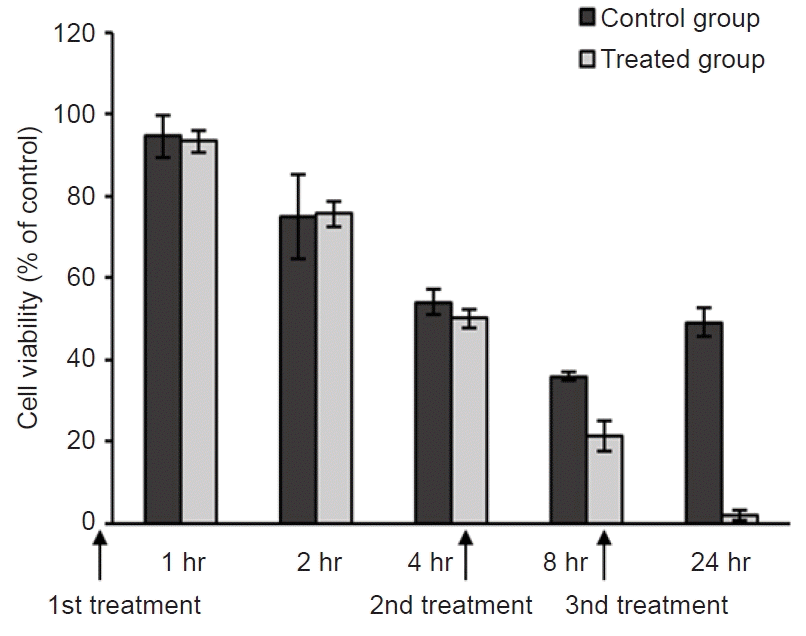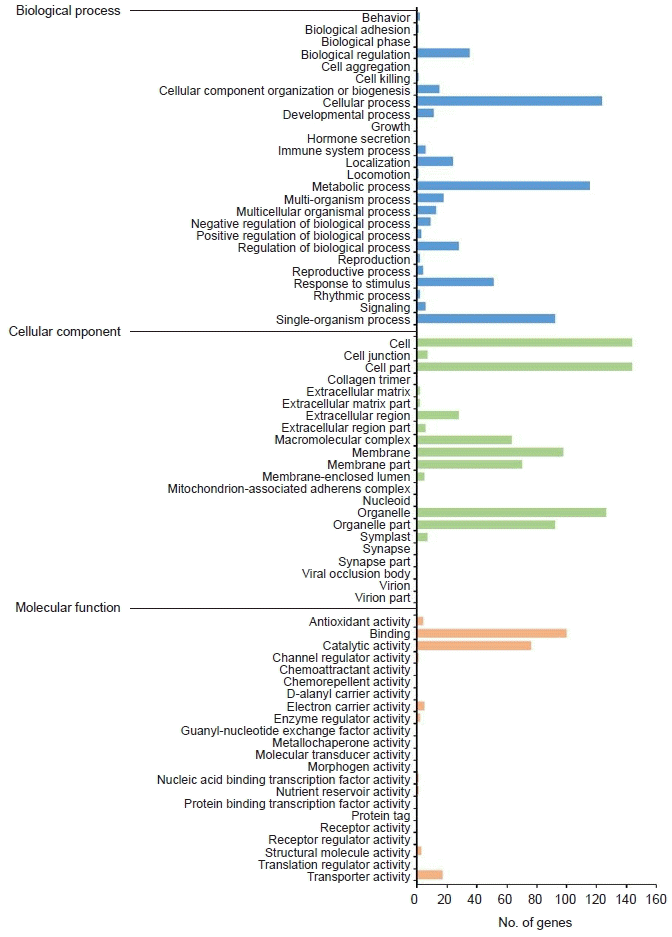1. Jee BY, Shin KW, Lee DW, Kim YJ, Lee MK. Monitoring of the mortalities and medications in the inland farms of olive flounder, Paralichthys olivaceus, in South Korea. J Fish Pathol. 2014; 27:77–83.
2. Kang BJ, Jang YH, Jhon BK, Park BH, Jin CN. Monitoring of scuticociliatosis of olive Flounder (Paralichthys olivaceus) farm in Jeju, Korea from 2007 to 2014. J Fish Pathol. 2015; 28:165–9.
3. Retallack H, Okihiro MS, Britton E, Sommeran SV, DeRisi JL. Metagenomic next-generation sequencing reveals Miamiensis avidus (Ciliophora: Scuticociliatida) in the 2017 epizootic of leopard sharks (Triakis semifasciata) in San Francisco Bay, California, USA. J Wildl Dis. 2019; 55:375–86.
4. Jung SJ, Kitamura S, Song JY, Oh MJ. Miamiensis avidus (Ciliophora: Scuticociliatida) causes systemic infection of olive flounder Paralichthys olivaceus and is a senior synonym of Philasterides dicentrarchi. Dis Aquat Organ. 2007; 73:227–34.
5. Aquaculture Research Department, Aquatic Disease Control Division. Aquatic medicine catalog. Busan: National Institute of Fisheries Science (NIFS);2016. p. 211.
6. Mariante RM, Vancini RG, Melo AL, Benchimol M. Giardia lamblia: evaluation of the in vitro effects of nocodazole and colchicine on trophozoites. Exp Parasitol. 2005; 110:62–72.
7. van der Werff SD, Vereecken K, van der Laan K, Campos Ponce M, Junco Diaz R, Nunez FA, et al. Impact of periodic selective mebendazole treatment on soil-transmitted helminth infections in Cuban schoolchildren. Trop Med Int Health. 2014; 19:706–18.
8. Chai JY, Jung BK, Hong SJ. Albendazole and mebendazole as anti-parasitic and anti-cancer agents: an update. Korean J Parasitol. 2021; 59:189–225.
9. Locatelli C, Pedrosa RC, De Bem AF, Creczynski-Pasa TB, Cordova CA, Wilhelm-Filho D. A comparative study of albendazole and mebendazole-induced, time-dependent oxidative stress. Redox Rep. 2004; 9:89–95.
10. Kim KH, Park SI, Jee BY. Efficacy of oral administration of praziquantel and mebendazole against Microcotyle sebastis (Monogenea) infestation of cultured rockfish (Sebastes schlegeli). Fish Pathol. 1998; 33:467–71.
11. Chagas EC, de Araujo LD, Martins ML, Gomes LC, de Oliveira Malta JC, Varella AB, et al. Mebendazole dietary supplementation controls Monogenoidea (Platyhelminthes: Dactylogyridae) and does not alter the physiology of the freshwater fish Colossoma macropomum (Cuvier, 1818). Aquaculture. 2016; 464:185–9.
12. Whang I, Kang HS, Lee J. Identification of scuticociliates (Pseudocohnilembus persalinus, P. longisetus, Uronema marinum and Miamiensis avidus) based on the cox1 sequence. Parasitol Int. 2013; 62:7–13.
13. Iglesias R, Parama A, Alvarez MF, Leiro J, Sanmartin ML. Antiprotozoals effective in vitro against the scuticociliate fish pathogen Philasterides dicentrarchi. Dis Aquat Organ. 2002; 49:191–7.
14. Barrowman MM, Marriner SE, Bogan JA. The binding and subsequent inhibition of tubulin polymerization in Ascaris suum (in vitro) by benzimidazole anthelmintics. Biochem Pharmacol. 1984; 33:3037–40.
15. McKellar QA, Scott EW. The benzimidazole anthelmintic agents: a review. J Vet Pharmacol Ther. 1990; 13:223–47.
16. Andersson CR, Selvin T, Blom K, Rubin J, Berglund M, Jarvius M, et al. Mebendazole is unique among tubulin-active drugs in activating the MEK-ERK pathway. Sci Rep. 2020; 10:13124.
17. Cowan AT, Bowman GR, Edwards KF, Emerson JJ, Turkewitz AP. Genetic, genomic, and functional analysis of the granule lattice proteins in Tetrahymena secretory granules. Mol Biol Cell. 2005; 16:4046–60.
18. Agrawal A, Bisharyan Y, Papoyan A, Bednenko J, Cardarelli J, Yao M, et al. Fusion to Tetrahymena thermophila granule lattice protein 1 confers solubility to sexual stage malaria antigens in Escherichia coli. Protein Expr Purif. 2019; 153:7–17.
19. Joffe LS, Schneider R, Lopes W, Azevedo R, Staats CC, Kmetzsch L, et al. The anti-helminthic compound mebendazole has multiple antifungal effects against Cryptococcus neoformans. Front Microbiol. 2017; 8:535.
20. Schmahl G, Benini J. Treatment of fish parasites. 11. Effects of different benzimidazole derivatives (albendazole, mebendazole, fenbendazole) on Glugea anomala, Moniez, 1887 (Microsporidia): ultrastructural aspects and efficacy studies. Parasitol Res. 1998; 84:41–9.
21. Thornalley PJ. Glyoxalase I: structure, function and a critical role in the enzymatic defence against glycation. Biochem Soc Trans. 2003; 31(Pt 6):1343–8.
22. Reck-Peterson SL, Redwine WB, Vale RD, Carter AP. The cytoplasmic dynein transport machinery and its many cargoes. Nat Rev Mol Cell Biol. 2018; 19:382–98.
23. Van den Bossche H, De Nollin S. Effects of mebendazole on the absorption of low molecular weight nutrients by Ascaris suum. Int J Parasitol. 1973; 3:401–7.
24. Lacey E. Mode of action of benzimidazoles. Parasitol Today. 1990; 6:112–5.
25. Medina RA, Owen GI. Glucose transporters: expression, regulation and cancer. Biol Res. 2002; 35:9–26.
26. Kitaoka S, Morielli AD, Zhao FQ. FGT-1 is a mammalian GLUT2-like facilitative glucose transporter in Caenorhabditis elegans whose malfunction induces fat accumulation in intestinal cells. PLoS One. 2013; 8:e68475.
27. Martin RJ. Modes of action of anthelmintic drugs. Vet J. 1997; 154:11–34.







 PDF
PDF Citation
Citation Print
Print



 XML Download
XML Download